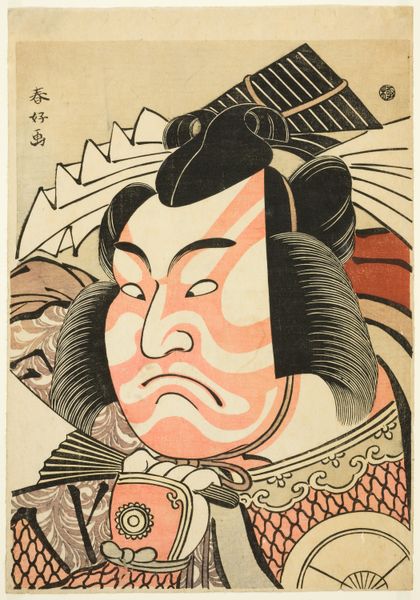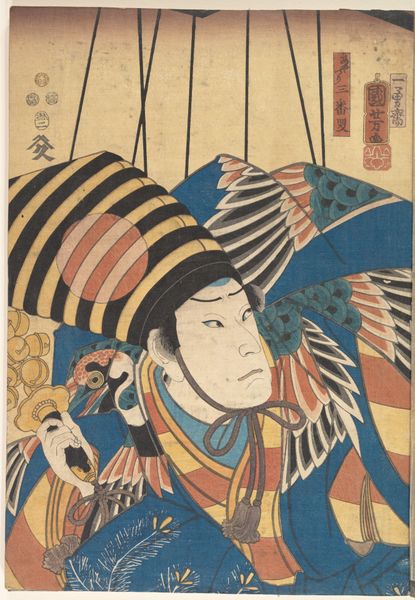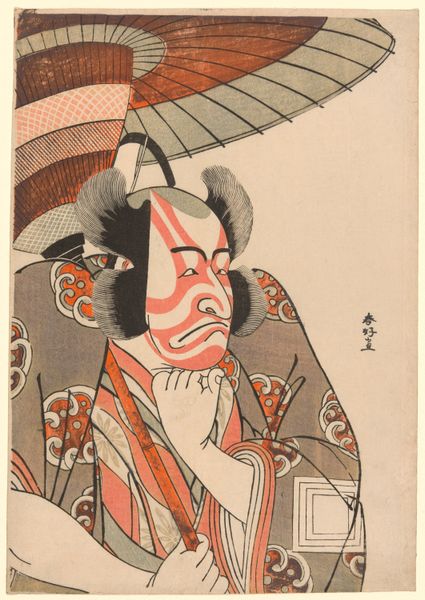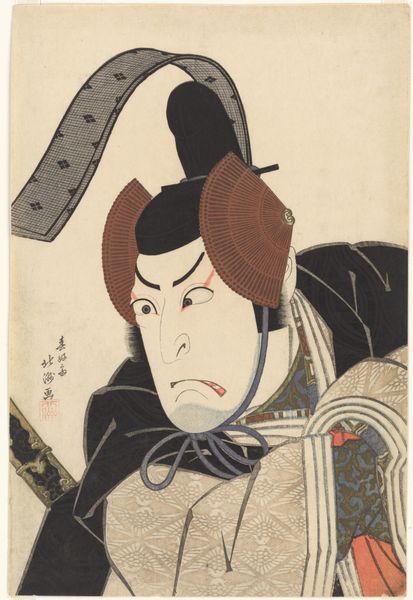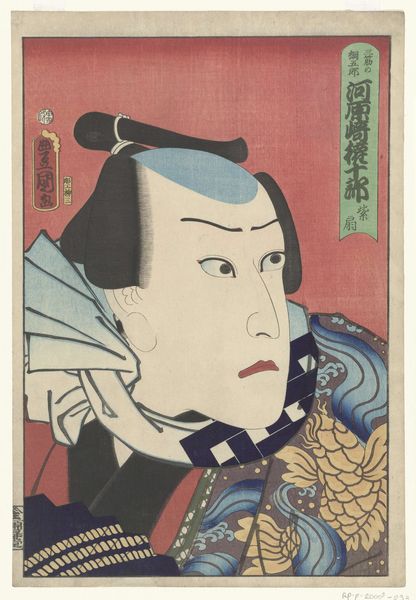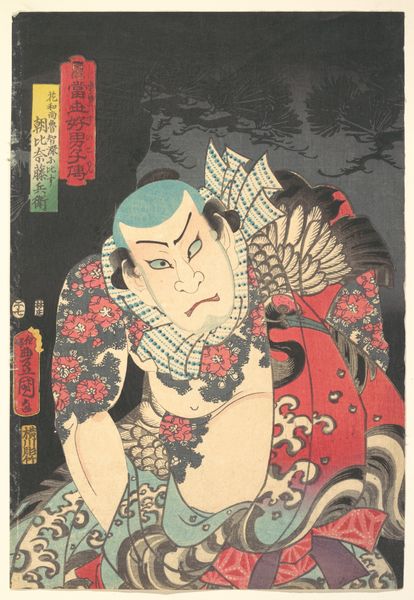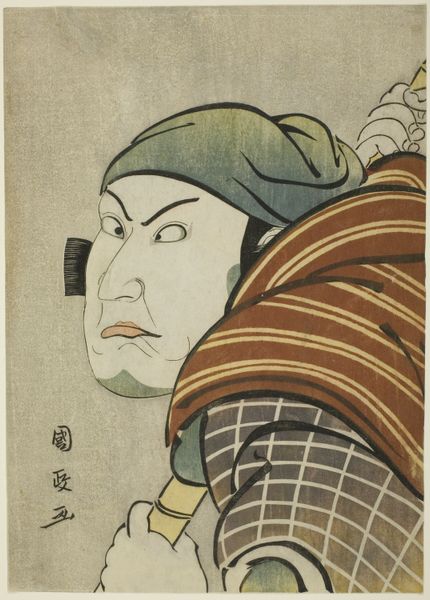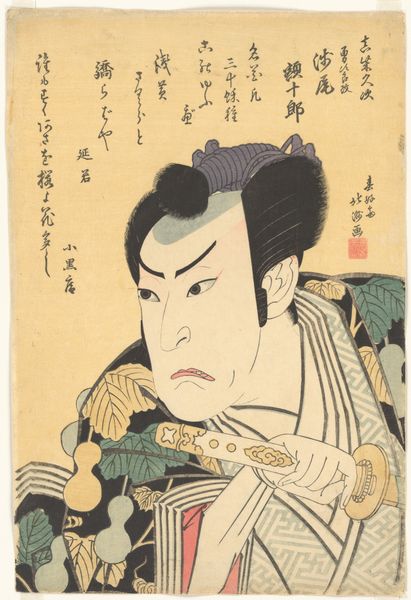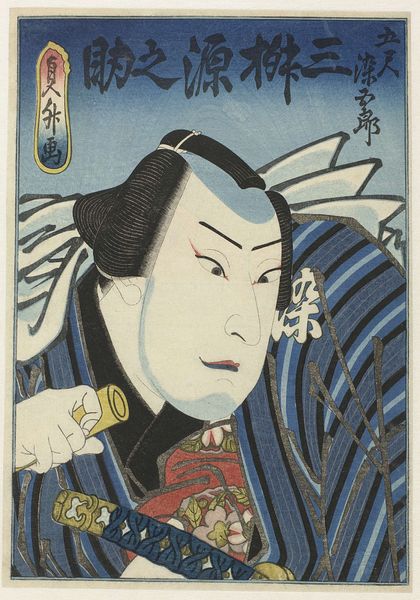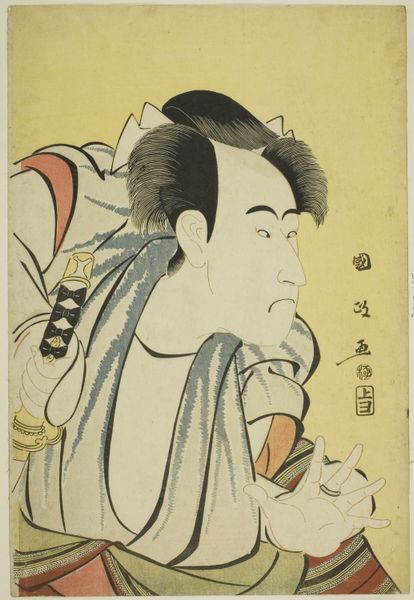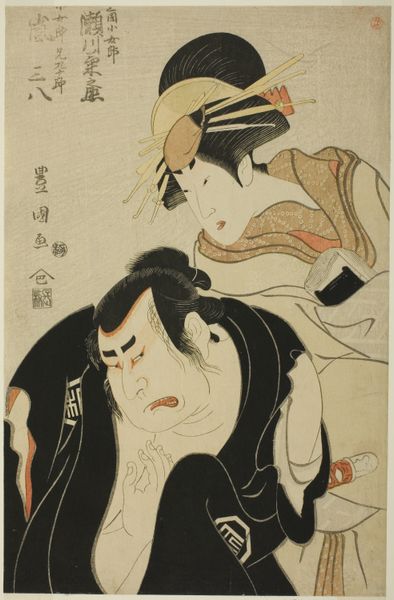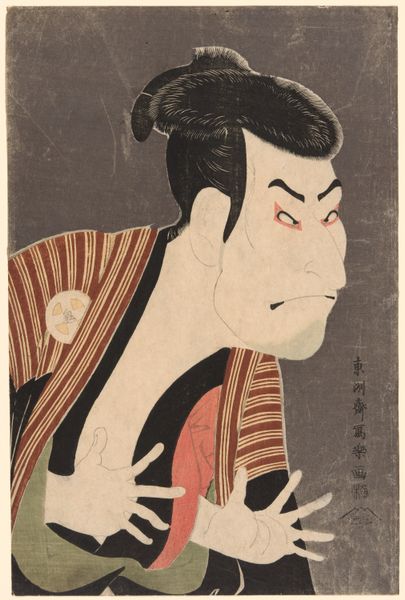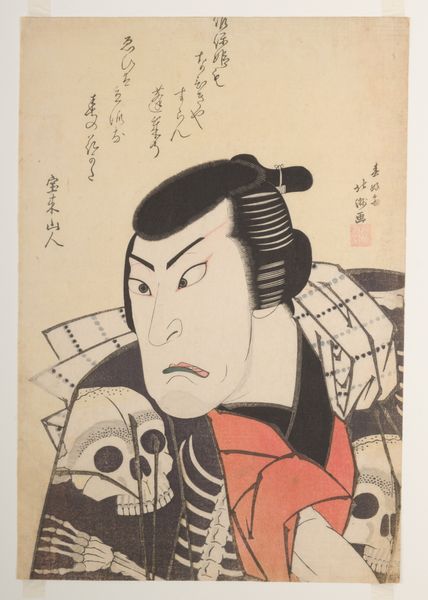
The actor Ichikawa Ebizo as Usui Arataro Sadamitsu in the Shibaraku scene of the play "Seiwa Nidai Oyose Genji," performed at the Miyako Theater in the eleventh month, 1796 1796
0:00
0:00
#
portrait
# print
#
caricature
#
asian-art
#
caricature
#
pop art
#
ukiyo-e
Dimensions: 38.3 × 26 cm (15 1/16 × 10 1/4 in.)
Copyright: Public Domain
Curator: Good morning. We’re here today to look at Utagawa Kunimasa’s striking woodblock print from 1796, residing here at the Art Institute of Chicago. The piece, titled "The actor Ichikawa Ebizo as Usui Arataro Sadamitsu in the Shibaraku scene of the play 'Seiwa Nidai Oyose Genji,'" captures the iconic Kabuki actor in a powerful role. What are your immediate impressions? Editor: Woah, that face is like a thunderclap! It feels monumental. That severe brow and intense gaze, almost a caricature...is this how theatre used to feel before digital overload, so concentrated and heightened? Curator: That intensity stems from the Kabuki tradition itself. Kabuki prints, or yakusha-e, served as a form of publicity. Kunimasa aimed to capture not just a likeness, but the essence of the role and the actor’s interpretation. The oversized head fills the frame to dramatize a key moment in the play. Editor: The actor's face reads larger than life; that heavy outline seems to almost liberate it from his theatrical costume. It is a daring style, far removed from a quest for classical beauty. Curator: Precisely. And in Kabuki theatre the *mie*, or dramatic pose, is of utmost importance. In many ways that expression captures the height of Ebizo’s dramatic declaration to command absolute silence. Editor: What I love is the balance between that ferocity, bordering on parody and all the pattern work; from the robe stripes to the character costume. It's as though this single theatrical gesture contains the tension of a complete cultural matrix. How revolutionary! Curator: It speaks to a dynamic tension in Japanese printmaking between realistic representation and stylized symbolism, catering to a public that both revered and satirized its cultural icons. These works were accessible, a kind of pop art of their time. The image also marks an evolution of theatrical publicity as performance. Editor: Knowing this context adds layers of meaning, it moves this imposing head from an icon into an individual. He’s at once the play and a man stepping out from the script. It’s an insightful record that balances social history with a burst of living energy. Curator: Exactly! In revisiting Kunimasa's print today, hopefully, viewers can not only appreciate his aesthetic sensibility but also find historical threads connecting the past to our present media landscape. Editor: Thanks for expanding my gaze. I was initially intimidated by the actor's huge head but seeing now I just wish art today might aspire for something even a portion as intense, so brave, yet tender, so that audiences feel at home there and can't ever forget its power.
Comments
No comments
Be the first to comment and join the conversation on the ultimate creative platform.
